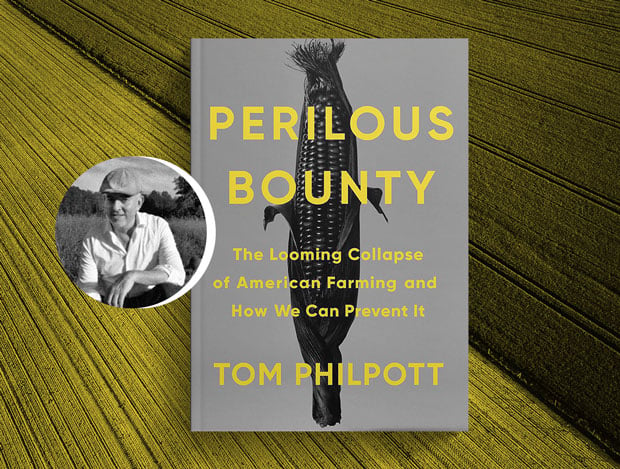At a recent event, we spoke with author Tom Philpott about the environmental and economic destruction brought by industrial farming and how we can reverse course.
As veteran reporter and author Tom Philpott says, our food system is incredibly productive — but also incredibly fragile.
The consequences of this have become ever clearer over the past few years. We’re seeing it in the headlines, in our communities, and in grocery store prices, which have soared amid disease outbreaks, climate-fuelled disasters, and supply chain shocks.
These kinds of crises now seem a part of everyday life. But our food system isn’t built to handle the stress — in fact, it’s caused or worsened many of these crises. Instead, our food system is designed to maximize corporate profits.
Tom knows this well. He wrote his book, Perilous Bounty, after 20 years of reporting on food issues and a few years spent running his own farm.
Earlier this month, Food & Water Watch’s Senior Food Policy Analyst Rebecca Wolf spoke with Tom at our September Livable Future Live event. They discussed the costs of our fragile system, the policies pushing it closer to disaster, and how we can start transforming it for the better.
“Get Big or Get Out” Makes Our Food Supplies Vulnerable to Crises
One of the major problems with our food system is how concentrated it is. Just a few, massive corporations grow, raise, and sell most of the food we eat. This trend is decades in the making, as lawmakers and regulators allowed Big Ag to grow with unchecked power over our most precious resources.
Unable to compete with the giants, many small- and medium-sized farms have been pushed out of the market. The system drives them to “get big or get out,” wiping livelihoods and even whole farming communities off the map.
Our food system is geographically concentrated, too. As Tom detailed, much of our grain (mostly used as feed in the factory farm system) comes from the Corn Belt in the Midwest. Meanwhile, the majority of our fruits, vegetables, and nuts are grown on mega-farms in California, notably in the San Joaquin Valley.
Not only is this bad for small farms and rural communities; it makes our whole food system more vulnerable to […]
Full article: www.foodandwaterwatch.org

